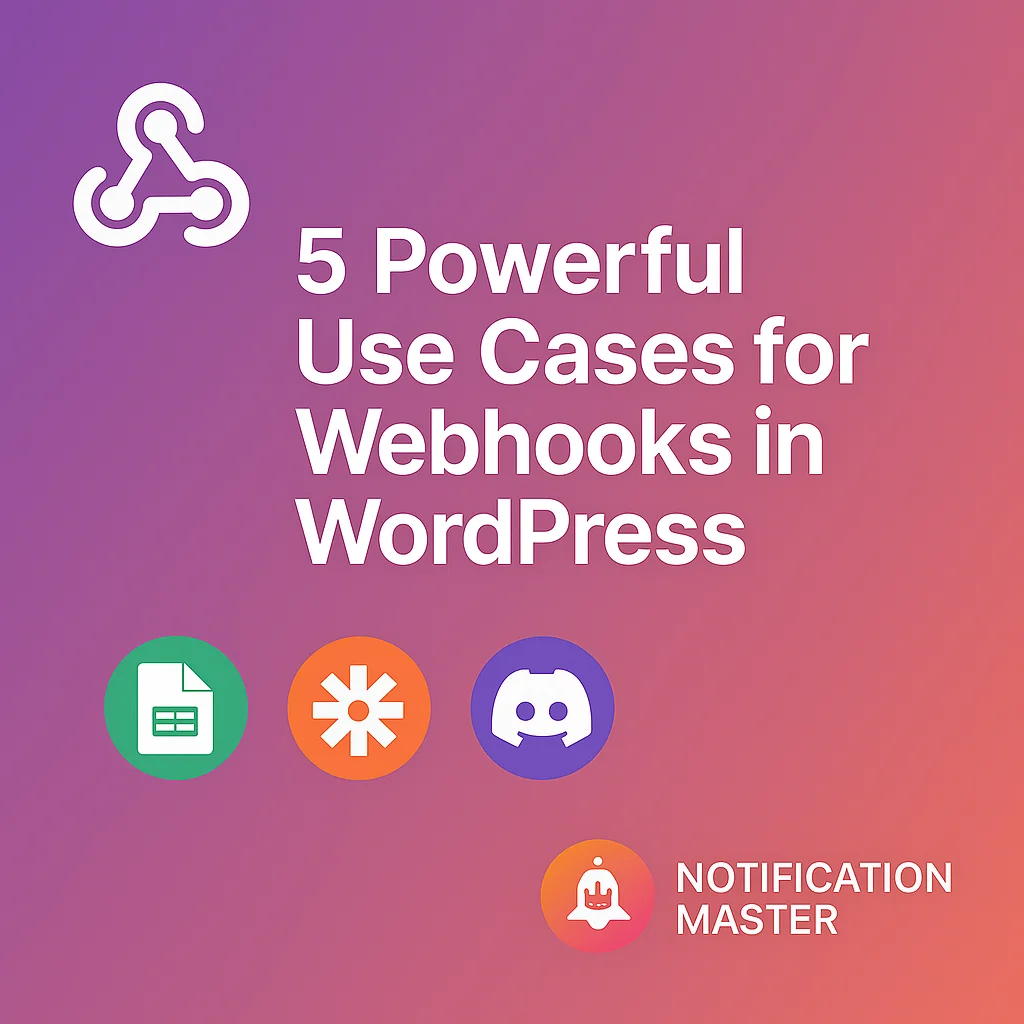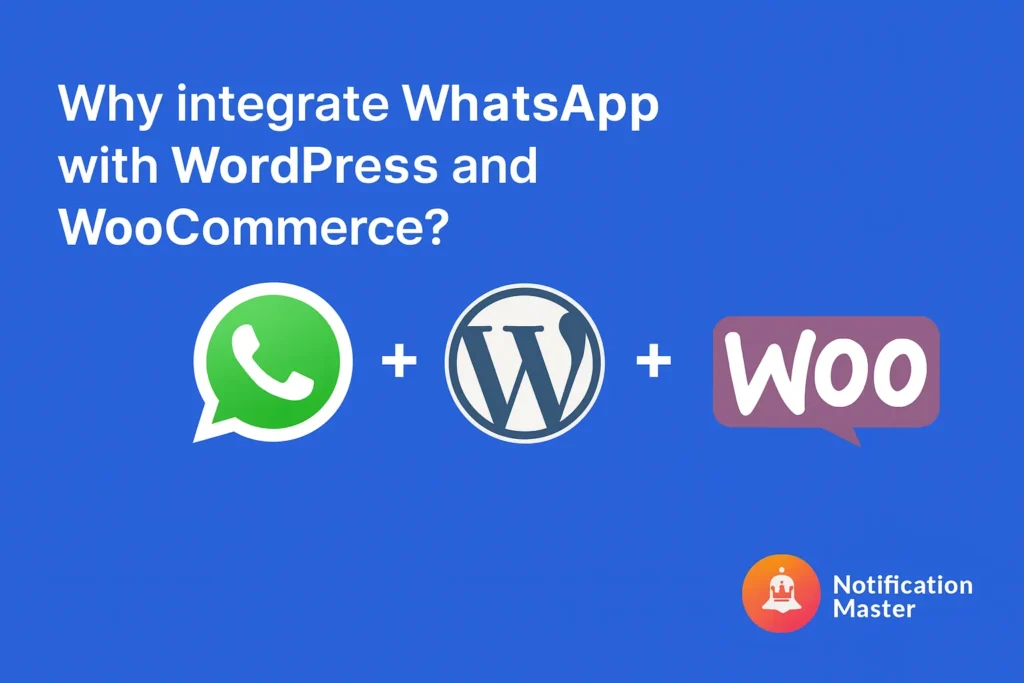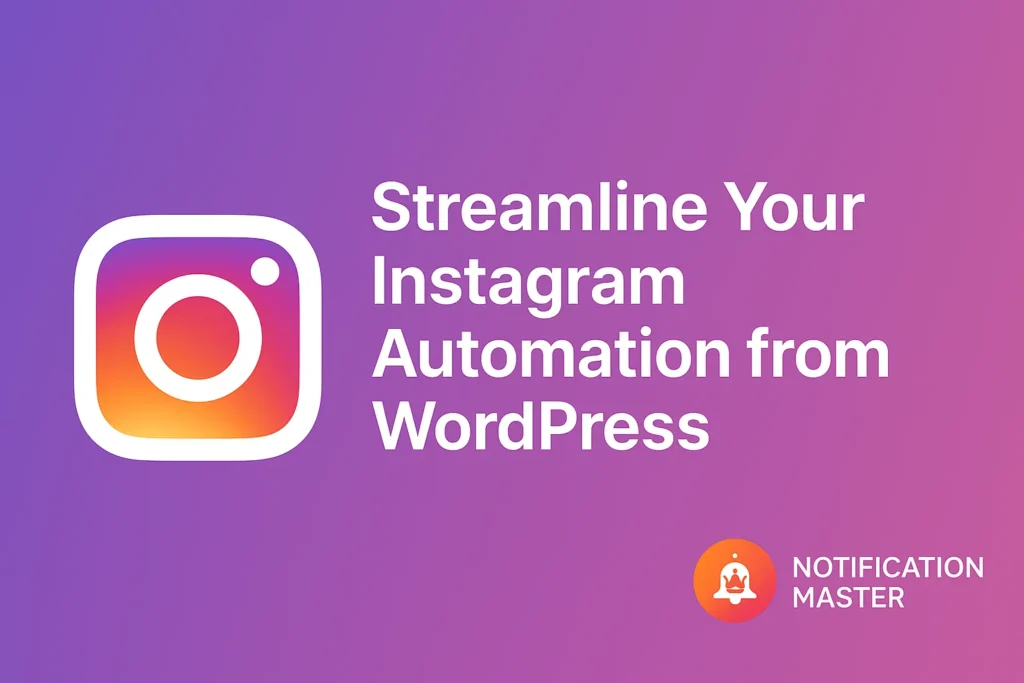Introduction
Webhooks are one of the most underrated tools in WordPress automation.
While most users rely on plugins for everything, advanced users know that webhooks can connect your WordPress site to thousands of external tools — instantly, in real time, and without writing complex code.
With the Notification Master plugin, sending webhook notifications becomes even easier. Whether you’re working with WooCommerce, forms, user registrations, or custom workflows — a webhook can notify another platform, app, or script when something happens.
Here are five powerful use cases to show what’s possible.
1. Send Form Submissions to Google Sheets
Collecting form data using plugins like WPForms or Fluent Forms? With a webhook trigger, you can automatically send each new entry to a Google Sheet — no manual export needed.
This is perfect for:
- Lead capture forms
- Job applications
- Event RSVPs
➡️ Learn how to set up a webhook in Notification Master
2. Send WooCommerce Order Data to a CRM
Tired of manually syncing customer data between WooCommerce and your CRM?
With webhooks, you can send order details to tools like:
- HubSpot
- Salesforce
- Zoho CRM
- Airtable
Just create a webhook connection in Notification Master, set the trigger to “Order Created,” and map the fields using merge tags.
3. Trigger Slack or Discord Alerts for Site Events
Running a team? Use webhooks to send instant alerts to Slack, Discord, or other team chat tools.
Use cases:
- Get notified when someone posts a comment or review
- Get pinged when a product goes out of stock
- Get alerted when a new user registers
➡️ See how Notification Master handles dynamic webhook fields
4. Trigger Make (Integromat) or Zapier Workflows
Notification Master’s webhook support allows you to trigger Zapier or Make scenarios — enabling endless automation possibilities.
Example:
- When a product is refunded → trigger a Zap → send an email to the finance team + update a Notion database
You’re not limited to built-in plugin functions anymore — you can trigger custom workflows with a single webhook.
5. Backup Post Data to a Third-Party API
Want to store backups of key data elsewhere?
You can use a webhook to send post content, title, author, and more to a third-party database, API, or backup tool every time a post is published or updated.
Ideal for:
- Publishing networks
- Content syndication
- Internal backups of important posts
Why Webhooks Are a Smart Move
Using webhooks inside WordPress gives you:
- Real-time data sharing across platforms
- Automation without bloated plugins
- Flexible triggers with Notification Master’s dynamic merge tags
- Cleaner workflows with less manual effort
Final Thoughts
If you’re building a serious WordPress setup — especially with WooCommerce, forms, or teams — webhooks are your secret weapon.
With Notification Master, integrating webhooks is simple, powerful, and endlessly customizable.
📌 You don’t need to be a developer to automate like one.



